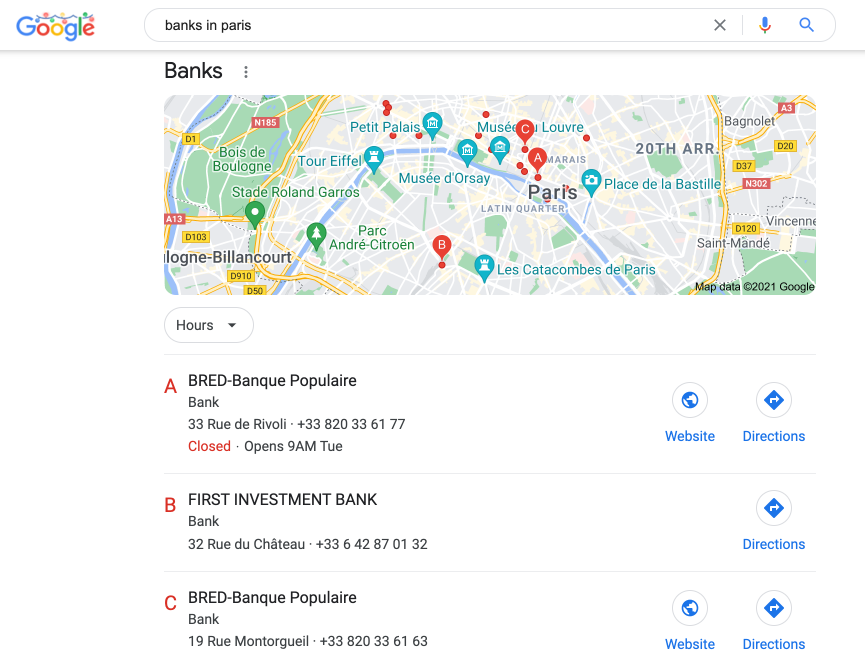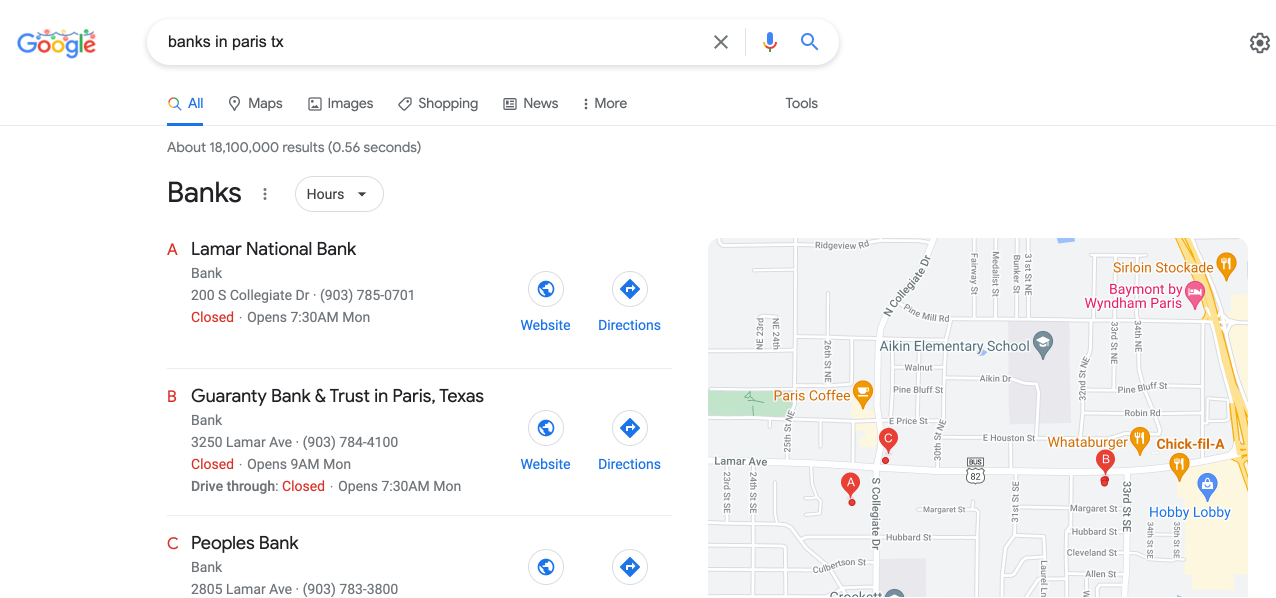On-page SEO is a Local Search strategy that can be adapted to help make your financial institution’s website more relevant to what users are searching for and which locations they are searching from or for. According to 2020’s Local SEO industry report, this was considered to be the #1 search engine ranking factor.
Keyword Research
Before starting any on-page SEO efforts, define which keywords you want your bank or credit union to rank for. Figure out what people are searching for to find the information you have.
You’ll need to do a little bit of keyword research, which can be done with various tools, but also by listening to your account holders and the way they speak. Do they say car loans more often than vehicle loans? Or home loans versus mortgages? Understanding these nuances can help you decide which general keywords to focus on and frame your content around.
Next, you’ll need to localize your keywords to narrow it down to the specific locations you serve. Start by creating a list of the towns and cities you have physical branches in and then build out to neighboring areas if you’d like to expand further. Then decide how do people in your area search for local things. Do they search by the town name, or is it the town name with the state written afterwards?
Asking this question is important. A good example to explain it would be for someone searching for “banks in paris”. This will give you completely different search results than someone who wants results for “banks in paris texas”.


Make sure you define these locations well and combine them with the service keywords you defined earlier. Ultimately your list will be a blend of general keywords and keywords combined with locations.
On-Page SEO
Now that you know what to rank for, you’ll need to include these phrases, locations and overall topics on to your website to build content relevance. Make sure what you’re writing and creating makes sense and is beneficial to the actual people visiting your site. Stuffing keywords on every page is going to sound unnatural and be difficult to understand.
Focus on these essential On-Page SEO strategies:
- Page Title Tags – making sure your page titles feature your primary keyword, the location if possible and make it engaging or something that will stand out on a search results page.
- Meta Descriptions – these generally appear on a search results page and give you a short description of what your page is about. This is another place to make your listing stand out and encourage click throughs.
- Content – Optimizing your content and building it out to be more informative is going to be your biggest strategy investment. At the basic level, you should include keywords in your content as it makes sense to and without keyword stuffing.
The styles of content you offer are what’s going to be of value. You can offer short form content that breezes through subject matters with simple bullet points and short paragraphs. This can provide a good user experience for people looking for basic and quick information.
On other pages you can get a lot more in depth on a topic and really explain in full everything someone would need to know on, as an example, first time home buyer loans, or refinancing an auto loan.
This type of long-form content is going to give you the ability to:
- Create new pages that can rank for additional keywords
- Draw in traffic from people who are in an early research phase. Maybe they heard about refinancing an auto loan and want to know more about what it is. However, they don’t necessarily need to contact you yet. But now that they’ve read your helpful article, they are aware of you and your expertise.
- It can be evergreen content, which is content that has kind of universal truths about a topic and doesn’t really go out of date. It is seen as a trustworthy page that can be relied on as a good source of information.
- Location Details – So of course, your site needs to list out the name, addresses and phone numbers of each branch, which can be done on a Contact Page or Locations page. You can also include that information in your website’s footer if you have a few locations. You can embed a Google Map to make it easy for account holders to get directions. If you have many locations, consider creating landing pages for each one that offers unique information for each and you can go further and highlight special offers or events that are specific to one branch.
- User Experience – Another important element is actually your website’s user experience. If you can create an engaging experience on your website that keeps people interested and on the page, that’s going to help signal that they are directing people to the right content. So look at improving things like your overall design, mobile experience, content layout and call to actions.
Get assistance with implementing on-page local SEO strategies from LKCS. Our SEO team is on-hand to guide you through and ensure you’re optimizing your site to its fullest extent.
Did you like this blog post?
Get more posts just like this delivered twice a month to your inbox!



